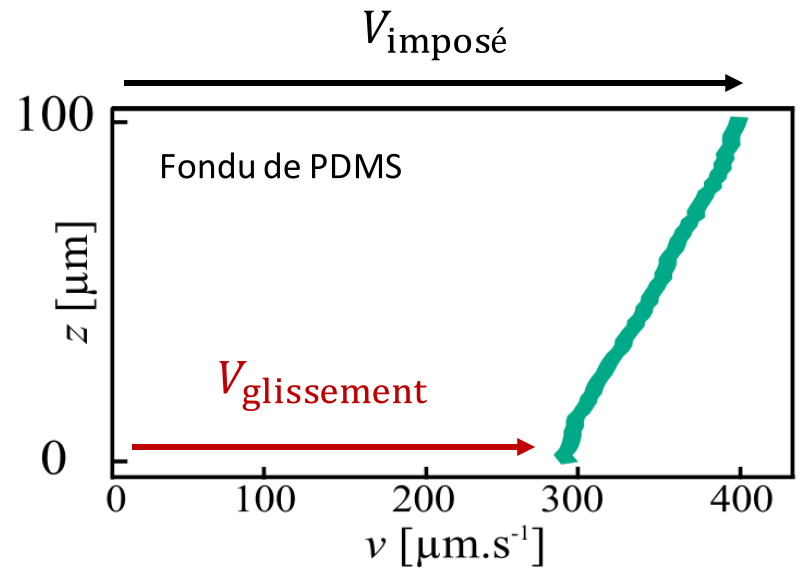Physical aging of supercooled liquids
Collaborator : F. Ladieu

Related publication:
- Crossing the Frontier of Validity of the Material Time Approach in the Aging of a Molecular Glass
M Hénot, ZA Nguyen, F Ladieu,
Journal of Physical Chemistry Letters, 15, 3170–3177, 2024. - Link to full text - Non-linear physical aging of supercooled glycerol induced by large upward ideal temperature steps monitored through cooling experiments
M Hénot, F Ladieu,
The Journal of Chemical Physics, 158 (22), 224504, 2023. - arXiv:2306.08409
Molecular dynamics of polar liquids
Collaborator : F. Ladieu, P-M. Déjardin

Related publication:
- Orientational dynamics in supercooled glycerol computed from MD simulations: self and cross contributions
M Hénot, PM Déjardin, F Ladieu,
Physical Chemistry Chemical Physics, 25, 29233-29240, 2023. - arXiv:2309.11369
Morphogenesis of glacial structures
Collaborators : N. Taberlet, N. Plihon, V. Langlois

We studied the formation of glacier tables and dirt cones observed on temperate zone glaciers. Glacier tables consist of a foot of ice supporting rocks measuring over a metre in size. Dirt cones form under layers of sand a few centimetres thick. The aim of this work was to use a combined laboratory and field approach to study the influence of parameters controlling ice melt on the formation dynamics of these structures.
Related publications:
- How dirt cones form on glaciers: field observation, laboratory experiments and modeling
M Hénot, VJ Langlois, N Plihon, N Taberlet
Physical Review E, 107 (3), 034905, 2023. - arXiv:2212.08471 - Formation of glacier tables caused by differential ice melting: field observation and modelling
M Hénot, VJ Langlois, J Vessaire, N Plihon, N Taberlet
The Cryosphere, 16 (6), 2617-2628, 2022. - Onset of Glacier Tables
M Hénot, N Plihon, N Taberlet
Physical Review Letters, 127 (10), 108501, 2021. - arXiv:2103.09760
Slip of polymer liquids
Collaborators : F. Restagno, L. Léger, M. Grzelka, A. Chennevière

My PhD work, under the supervision of F. Restagno and L. Léger, involved an experimental study of the sliding properties of liquid polymers. Unlike simple liquids, liquid polymers do not necessarily respect the classical condition of non-slip at the wall.
A new method for measuring slip
The first part of my PhD involved developing a new method for measuring the slip of polymer liquids by tracking a photolysed pattern in a fluorescent fluid. This method, which is an evolution of the one previously used in the group, provides direct access to the fluid displacement field during flow [1].

Using this new device, I experimentally investigated the effect of surface nature, liquid viscosity and temperature on the sliding of polymer melts. I was able to show that the slip effect is controlled by the viscosity of the melts and by a molecular friction coefficient that depends only on the chemical natures of the liquid and the surface. In particular, this coefficient of friction is the same for a melt as for an elastomer made from the same polymer [2].

Effect of temperature on the sliding of melts
By measuring the slip of melts and elastomers at different temperatures, we have shown that the temperature dependence of the coefficient of friction is an activated process whose activation energy depends on the surface. This can lead to increasing or constant sliding effects, depending on the system under consideration [4].

Related publications:
- Temperature-controlled slip of polymer melts on ideal substrates
M Hénot, M Grzelka, J Zhang, S Mariot, I Antoniuk, E Drockenmuller, L Léger, F Restagno
Physical Review Letters, 121 (17), 177802, 2018. - arXiv:1810.08917 - Sensing adsorption kinetics through slip velocity measurements of polymer melts
M Hénot, E Drockenmuller, L Léger, F Restagno
The European Physical Journal E, 41 (83), 2018. - arXiv:1802.00692 - Friction of polymers: from PDMS melts to PDMS elastomers
M Hénot, E Drockenmuller, L Léger, F Restagno
ACS Macro Letters, 7 (1), 112-115, 2018. - arXiv:1704.02742 - Comparison of the slip of a PDMS melt on weakly adsorbing surfaces measured by a new photobleaching-based technique
M Hénot, A Chennevière, E Drockenmuller, L Léger, F Restagno
Macromolecules, 50 (14), 5592-5598, 2017. - arXiv:1704.02743
Glass transition in thin polymer films
Collaborators : F. Restagno, L. Léger
The glass transition in thin polymer films exhibits a surprising behavior: the glass transition temperature shows a significant decreases when the film thickness is less than a few tens of nm. During my M2 internship and at the begining of my PhD, I investigated the influence on this effect of the interaction between a polystyrene film and its substrate by grafting polymer chains on the surface [1].
Related publication:
- Influence of grafting on the glass transition temperature of PS thin films
M Hénot, A Chennevière, E Drockenmuller, K Shull, L Léger, F Restagno
The European Physical Journal E, 40 (1), 1-8, 2017. - arXiv:1701.04711